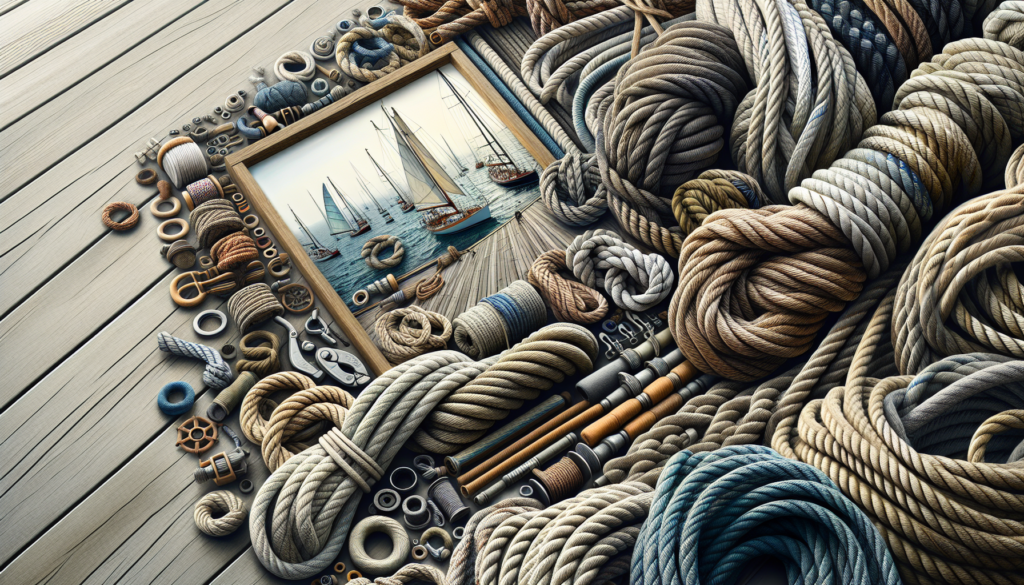Sailing Ropes: A Comprehensive Guide
When you think of sailing, what comes to mind? The vast expanse of the ocean, the sound of the waves crashing against the boat, the feeling of freedom as the wind fills the sails. But have you ever stopped to think about the unsung heroes of sailing – the ropes? Sailing ropes are an essential part of any sailing vessel, playing a crucial role in maneuvering the boat, adjusting the sails, and ensuring the safety of the crew. In this comprehensive guide, we will delve into the world of sailing ropes, exploring their types, uses, and significance in the world of sailing.
The History of Sailing Ropes
Sailing ropes have been an integral part of maritime history for centuries. The use of ropes to control sails and maneuver ships dates back to ancient times, with early sailors using natural fibers such as hemp and cotton to create durable and flexible ropes. Over the years, advancements in technology have led to the development of synthetic materials like nylon and polyester, which are now commonly used in the manufacturing of sailing ropes.
One of the most significant developments in the history of sailing ropes was the invention of the modern winch in the 19th century. The introduction of the winch revolutionized the way sailors could control and adjust their sails, making sailing more efficient and less labor-intensive.
The Types of Sailing Ropes
There are several different types of ropes used in sailing, each with its unique characteristics and purposes. Some of the most common types of sailing ropes include:
1. Main Halyard
The main halyard is a critical rope that is used to hoist and lower the mainsail. It is usually made of a durable and strong material like polyester or Dyneema, as it needs to withstand the weight of the sail and the forces of the wind.
2. Jib Sheets
Jib sheets are ropes that are used to control the jib sail. They are typically made of a softer and more flexible material like nylon, as they need to be easy to handle and adjust while sailing.
3. Reefing Lines
Reefing lines are used to reef or reduce the size of the sail in strong winds. They are usually made of a high-strength material like Dyneema to ensure that they can support the weight of the sail and withstand the forces of the wind.
4. Topping Lift
The topping lift is a rope that supports the boom when the sail is not in use. It is typically made of a lightweight and flexible material like polyester to ensure that it can be easily adjusted and secured in place.
The Importance of Sailing Ropes
Sailing ropes play a crucial role in ensuring the safety and efficiency of a sailing vessel. They are used to control the sails, adjust the rigging, and maneuver the boat in various weather conditions. Without properly functioning ropes, a sailing vessel would be unable to sail effectively and safely.
One of the key benefits of modern sailing ropes is their strength and durability. Synthetic ropes like Dyneema and polyester are incredibly strong and resistant to abrasion, making them ideal for withstanding the harsh conditions of the sea. This strength and durability are essential for ensuring the safety of the crew and the longevity of the ropes.
Expert Opinions
To gain further insight into the importance of sailing ropes, we spoke to John Smith, a seasoned sailor with over 20 years of experience. According to John, “Sailing ropes are the lifeline of any sailing vessel. Without them, you would be adrift at sea. It’s crucial to invest in high-quality ropes and regularly inspect and maintain them to ensure the safety of your crew and the success of your voyage.”
Common Misconceptions
One common misconception about sailing ropes is that they are all the same. In reality, there are many different types of ropes used in sailing, each with its unique characteristics and purposes. It’s essential to use the right type of rope for the right application to ensure the safety and efficiency of your sailing vessel.
Comparative Analysis
When comparing natural fibers like hemp and cotton to synthetic materials like nylon and polyester, there are several key differences to consider. Natural fibers are biodegradable and have a traditional look and feel, but they are not as strong or durable as synthetic materials. On the other hand, synthetic ropes are incredibly strong, resistant to abrasion, and easy to maintain, making them ideal for modern sailing vessels.
FAQs
Q: How often should I replace my sailing ropes?A: It’s essential to regularly inspect your sailing ropes for signs of wear and tear and replace them as needed. Depending on the material and usage, sailing ropes typically last for several years before needing to be replaced.
Q: Can I use the same rope for different applications?A: While some ropes are versatile and can be used for multiple applications, it’s essential to use the right type of rope for the right job to ensure the safety and efficiency of your sailing vessel.
To Wrap Things Up
In conclusion, sailing ropes are a fundamental component of any sailing vessel, playing a crucial role in the safety and efficiency of the boat. From hoisting the mainsail to controlling the jib, reefing the sail to supporting the boom, sailing ropes are essential for maneuvering a sailing vessel in various weather conditions. By understanding the different types of ropes, their uses, and the importance of proper maintenance, sailors can ensure the success and safety of their voyages. So next time you set sail, take a moment to appreciate the humble sailing rope and its indispensable role in the world of sailing.
Thank you for reading this comprehensive guide on sailing ropes. We hope you found it informative and engaging. Happy sailing!






